We’ve all been there. In a grocery store, at the mall, or even in our littles one’s room at bedtime, when it happens…a massive meltdown.
It may be a tantrum when your little one hasn’t gotten their own way: a piece of candy, staying up later, an extra episode of their favorite cartoon. In an instant doors slam, tears fall, screams echo. There may be flailing on the floor and possibly some objects thrown across the room.
It might be a different kind of meltdown, the kind that children who are on the autism spectrum often have when they’ve reached their limit of stimulation. Perhaps they’ve been at a holiday gathering, school, or in a medical setting with a lot of lights, sounds and smells, and then it happens…sensory overload.
It’s hard to watch kids in a meltdown, whether it is a tantrum or sensory overload. By the time the child is at that point there’s little we can do except keep them safe and wait for the big emotions to pass. As in the examples above, there are usually two types of meltdowns.
These are when a child, usually in front of an audience of adults or peers, is unable to handle the frustration of the moment. They may want a candy bar in the checkout line and they are told the answer is no. They may want to stay at the playground a little bit longer, and are upset it is time to leave. When frustration meets limited vocabulary and feelings of powerlessness, a tantrum is likely to occur.
Kids having a temper-tantrum meltdown often look to see if adults are looking, use it to achieve a goal (getting that ice cream cone) and in all fairness, use their power to get what they want. While they may look out of control, they are often very much in control of the situation. This type of meltdown usually subsides when a child’s outburst delivers the thing that they want, the behavior exhausts them, or the strong emotion passes.
Any child can have one, although it is more often occurs in children on the autism spectrum, with ADHD or a sensory processing disorder. Unlike a typical tantrum, a sensory meltdown occurs when the child becomes overwhelmed and scared when confronted with too much stimuli. The child may be reacting to an overload of sights, smells, people, heat, or touch. Similar to after-school restraint collapse, sensory meltdowns may be caused by unexpected change in routine or excess of stimulation from their day.
Typical triggers are bright fluorescent lights, big crowds, too much noise, a lot of unfamiliar people (think holiday gatherings or a movie theater) or too many smells (the food court at the mall, for example.)
In a sensory meltdown the child isn’t looking for attention or a new toy. They are often terrified, in a state of high anxiety, with physical symptoms that cause them great distress. The child may have a high heart rate, they may bang their head, hold their breath, and have no regard for their physical safety.
Adults who witness a child having either kind of meltdown find them upsetting, stressful, and scary.
Meditation, in moments like these, seems like it is the last thing that would help. This is true…in the throes of a meltdown, no child is going to begin practicing meditation.
Parents, teachers, and caregivers need to bring meditation and mindfulness practices into a child’s life in many moments, over time, so the child has an array of calming tools to use before they becoming overwhelmed to the point of a meltdown.
For children with poor impulse control and trouble with emotional regulation, the “pause” of mindfulness and meditation helps them become less reactive, over time. With practice, kids who engage in meditation and mindfulness activities like taking slow deep breaths, visualizing a calming space or holding a soothing object, are able to improve their emotional regulation skills. This may help them avoid getting into a meltdown state to begin with, or may even help them before a meltdown gets in full swing.
Remember, these skills need time to develop. You don’t go to the gym, lift a weight, and expect to be immediately stronger. But building a mindfulness practice with children, talking about big emotions and giving them words to describe how they feel, and also tools to help them calm down, is very empowering to them.
When children are calm, you can ask them what big emotions feel like. What they look like. You might hear things like “Anger makes me feel like a big scary monster who wants to smash things.” Acknowledge whatever they say, without judgment, and then see if you can offer mindful ways they can address the scary monster when he comes calling.
Children, especially young children, may hold their breath when they are angry or upset. Teaching them how to use their breath to calm down is a skill that will benefit them throughout their life. Some easy ways to teach mindful breathing include blowing bubbles, putting a stuffed toy on their tummy to teach diaphragmatic breathing, or using a pinwheel.
You can also teach them rhyming words, or songs like “When I’m an angry monster and I want to shout, I can (insert what works best here) and let it out.”
∙”When I’m an angry monster and I want to shout, I take deep breaths and blow them slowly out.”
∙”When I’m an angry monster and I want to scream, I visualize a calm place or a peaceful scene.”
∙”When I’m feeling emotions that are big and scary, I imagine being held by a magical fairy.”
∙”When it’s too loud and the lights are too bright, taking slow deep breaths makes me feel just right.”
∙”When I’m overwhelmed and I start to cry, I imagine myself under a soft, blue sky.”
You can compose rhymes, like those above, until you find one that is meaningful and memorable for your child. You want a rhyme that they can memorize and use in the moment, after a lot of practice during times when they are feeling calm.
Meditation helps meltdown kids because over time, it allows kids tune into their feelings, their big emotions, and gives them ways to feel in control of themselves and situations. People who practice meditation report feeling more calm and in control of their life throughout the day, and not just during the times they are meditating.
Immediately after meditating, children will feel more calm, focused, and able to deal with stressors. In time, after participating in regular meditation practices over weeks and months, children will begin feeling the benefits like better sleep, increased patience, and better impulse control.
But let’s be clear: meditation is not going to make a child give up their quest for a checkout line chocolate bar. However, over time, meditation, may make them less likely to react with frustration and rage when immediate wants are not met. The longer it is practiced, meditation has a calming effect on the nervous system.
In the same way, meditation and mindfulness will not eliminate a child’s sensory overload in certain stressful situations. But mindfulness practices are tools that will help the child calm sensory overload before it happens, perhaps have the words to use to ask for help, or be able to calm themselves when in a situation that is sensory-overwhelming for them.
Meditation can help give kids the tools they need for better emotional regulation and wellbeing.
Wee Meditate has many meditations to help meltdown kids. They’ll feel a sense of camaraderie with Weasel, who has lots of meltdowns himself, they’ll go on learning adventures with Dragon, and they will develop skills that will help them manage big emotions.
Sign up for Wee Meditate to access our full meditation library. Our meditation curriculum blends the latest research and teaches kids meditation in a way that is accessible and engaging.

